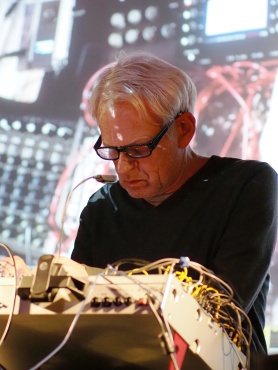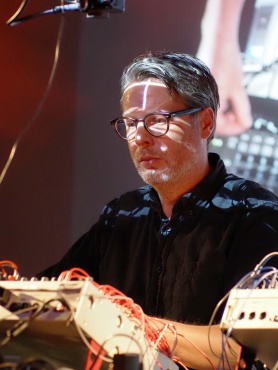Do 13.6. - 20 Uhr - Eintritt 10 €, ermäßigt 6 €
Audiovisionen Beispiel: Frank Bretschneider und Jan Jelinek

Kartenvorverkauf: https://www.koka36.de/beispiel-frank-bretschneider-jan-jelinek-_ticket_165038.html
Beispiel (Frank Bretschneider + Jan Jelinek) Elektronische Musik, die sich in der Improvisation aus sich selbst heraus entfaltet. Eine Kettenreaktion aus Aktion und Antwort, immer neuen gegenseitigen Inspirationen. Bretschneider und Jelinek schaffen als »Beispiel« eine Aura, die gleichzeitig hypnotisch und radikal wirkt. Nur zehn Gehminuten zum Studio des jeweils anderen, die langjährige gegenseitige Begeisterung für die jeweilige Arbeit und die Faszination für modulare Synthesizer und experimentelle Setups – das sind die Ausgangspunkte für unzählige gemeinsame Sessions, die Bretschneider und Jelinek als Duo »Beispiel« schließlich zum Album »Muster« verdichtet haben.
https://taz.de/Neue-Musik-aus-Berlin/!5836484/
Fotos © Udo Siegfriedt

Beispiel (German for example, also suggests playing together), a joint project by Frank Bretschneider and Jan Jelinek. Muster is their first album. Free electronic music, the result of spontaneous improvisations. “Meaning” is a concept that is overused in connection with music. Muster does not call for the same kind of air quotes. With its title, German for patterns/exemplars, Beispiel’s album frees itself from the ballast of teleological semantics. There is no overarching theme, no preparation, no reading list, no reason for this music. Just two facts: Frank Bretschneider and Jan Jelinek have known each other a long time and appreciate each other’s work; and they share a love of modular synthesizers and of experimental set-ups designed to capture surprise. Bretschneider and Jelinek got together for their first joint session in 2016 and the years that followed brought more such meetings at Jelinek’s studio for open-ended musical dialog – at irregular intervals and with no clear objective. The improvisations were recorded in two stereo tracks: one track for Bretschneider’s audio, one for Jelinek’s. After each session, the recordings were processed separately, the options essentially limited to cutting and altering the frequency range. The nine pieces for Muster were selected from the resulting material. This approach reflects an ideal: music is when you play your first note without knowing what the third or fourth will sound like. When your 290th note still sees you leaving the beaten track, and when curiosity grows as the piece unfolds. Duping is part of Beispiel’s practice. Improvisation is about disagreement. It’s a matter of addressing the right issues. What’s happening here? What’s mine, what’s yours? Are “why” and “where next” legitimate questions? Muster is an exemplary work. Nine suggestions for what can be. Nine ideas for possibilities of listening.